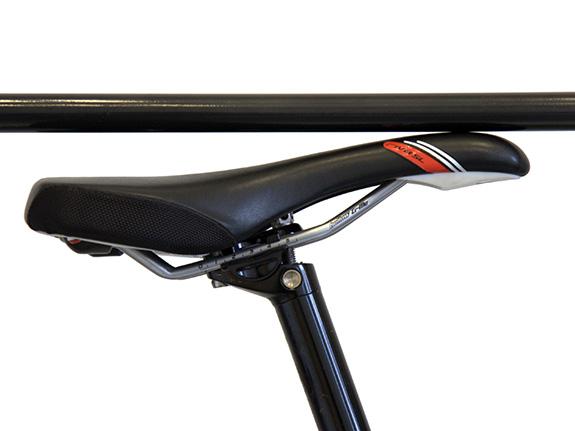Wrong Angle
Adjusting your bike seat.
For valley cyclists, the first warm days of spring signal a shift from powder to pedals. Road biking is typically devoid of the aches and pains of more jarring pursuits, but as the rides get longer, pain and dysfunction can start to take a toll, especially if your bike is improperly fitted.
One aspect of a bike’s fit that is often overlooked is saddle tilt. Improper saddle tilt can lead to back pain and saddle-area numbness. Saddles are usually tilted up too far, meaning a happy saddle makes for an unhappy cyclist. Some cyclists think saddle-area numbness—or even worse, cycling-induced erectile dysfunction—is a normal part of riding. (In fact, one study found 24% of cyclists that ride 250+ miles per week have cycling-related erectile dysfunction, making for very unhappy cyclists, indeed.) To combat cycling-related saddle-area numbness and dysfunction, make sure you wear shorts with a good chamois, have the right saddle for you, and that your saddle tilt is level or slightly below level.
Back pain is another common orthopedic complaint in cyclists. The causes of cycling-related back pain are multi-faceted: from one’s training habits, to flexibility and strength. However, one’s posture on the bike is the easiest to fix. While cycling-related back pain is most common in road cyclists and triathletes, mountain bikers are not immune. Saddle tilt influences the position of the lumbar spine and pelvis, and adjusting the tilt of your saddle can be a quick fix. Tilting your saddle slightly down from level allows you to maintain a more natural spine position and decrease stress on your lower back.
To adjust the tilt of your saddle, start out by making sure your bike is on level ground. Use a carpenter’s level to determine the current angle of your saddle, then adjust your saddle angle down to negative 1 to 3 degrees. If you have a full-suspension bike, account for the suspension sag and tilt the saddle down further. There are many different seat-clamp styles, so if you don’t know how to adjust your saddle angle for your specific saddle clamp, visit your local bike shop. Most importantly, make sure your saddle clamp is securely retightened to avoid saddle slippage during a ride.
If adjusting your saddle doesn’t alleviate your symptoms, visit a physical therapist certified in bike fitting.
Jason Lunden can be found helping getting people back to the activities they love, including biking, at Excel Physical Therapy in Bozeman and Manhattan.












